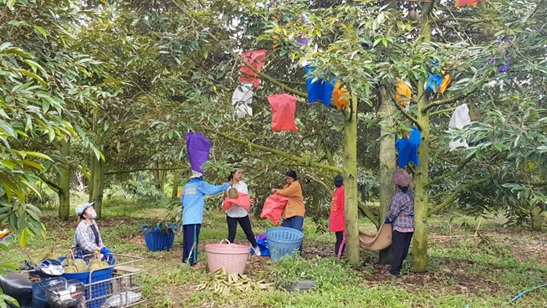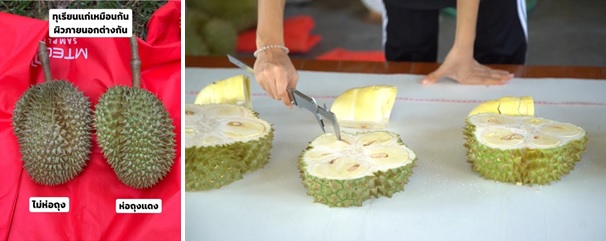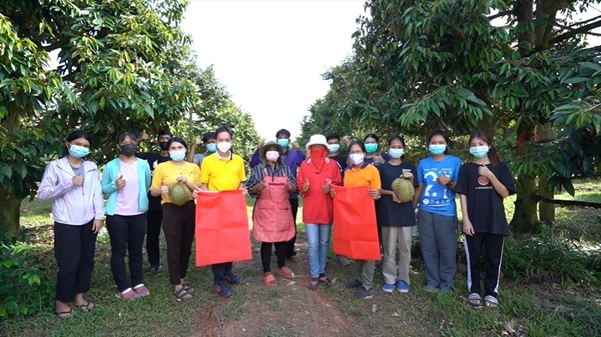Durian is an important fruit crop in Thailand. Its export value just hit the record high of 58.344 billion THB over the five-month period of 2021, generating the second highest revenue out of all farm product exports after rubber. To maintain high productivity and quality, pest management is the key among durian orchards. Fruit bagging is a method that orchards use to prevent insect pests infesting durian fruit. The practice is preferred over pesticides which is more expensive and not safe for workers, consumers and the environment. Fruit wrapping bags available in the market are net bags that provide protection against fruit borers, but not mealybug and sooty mold.
To overcome this problem, MTEC-NSTDA introduced an innovative fruit wrapping bag Magik Growth. Developed by MTEC Textiles Research Team, Magik Growth is made from a nonwoven material designed to meet the needs of modern agriculture. The material is porous, thus allowing water and air to pass through. It also filters appropriate wavelength of the light for optimum plant growth, resulting in improved productivity and product quality.
To field-test Magik Growth, MTEC worked with Assist. Prof. Dr. Lampan Khurnpoon, Department of Plant Production Technology, King Mongkut's Institute of Technology Ladkrabang and a durian orchard in Rayong province. The trial has been conducted since 2019, covering three cropping seasons so far. The results show that fruits wrapped with Magik Growth have 30% thinner shell and are 10% heavier. The flesh color and skin appearance are also more appealing. Magik Growth is found to be effective against mealybug and sooty mold. In addition, it can be re-used, at least for 3 cropping seasons as demonstrated in this experiment. On top of better-quality fruit, the orchard owner also saved on pesticide cost.


Magik Growth technology has been licensed to a company for commercial production. The product is expected to be launched later this year.
Magik Growth provides an excellent example of Bio-Circular-Green Economy (BCG) model that aims to employ research and innovation and the concept of bioeconomy, circular economy and green economy to enhance the competitiveness of agriculture, manufacturing and service sectors, while conserving the environment.

